The Hornbill Festival in Nagaland is a major cultural event in India. It started in 2000 by the Nagaland Government. It’s a chance to see the traditions of the 17 Naga tribes.
From December 1 to 10, the festival lights up the Kisama Heritage Village. You’ll find music, dance, sports, and tasty local food. This Hornbill Festival guide will help you enjoy 2024 to the fullest.
It covers the festival’s history, travel tips, and where to stay. It’s perfect for locals and tourists alike. The Hornbill Festival is a chance to dive deep into Nagaland’s culture.
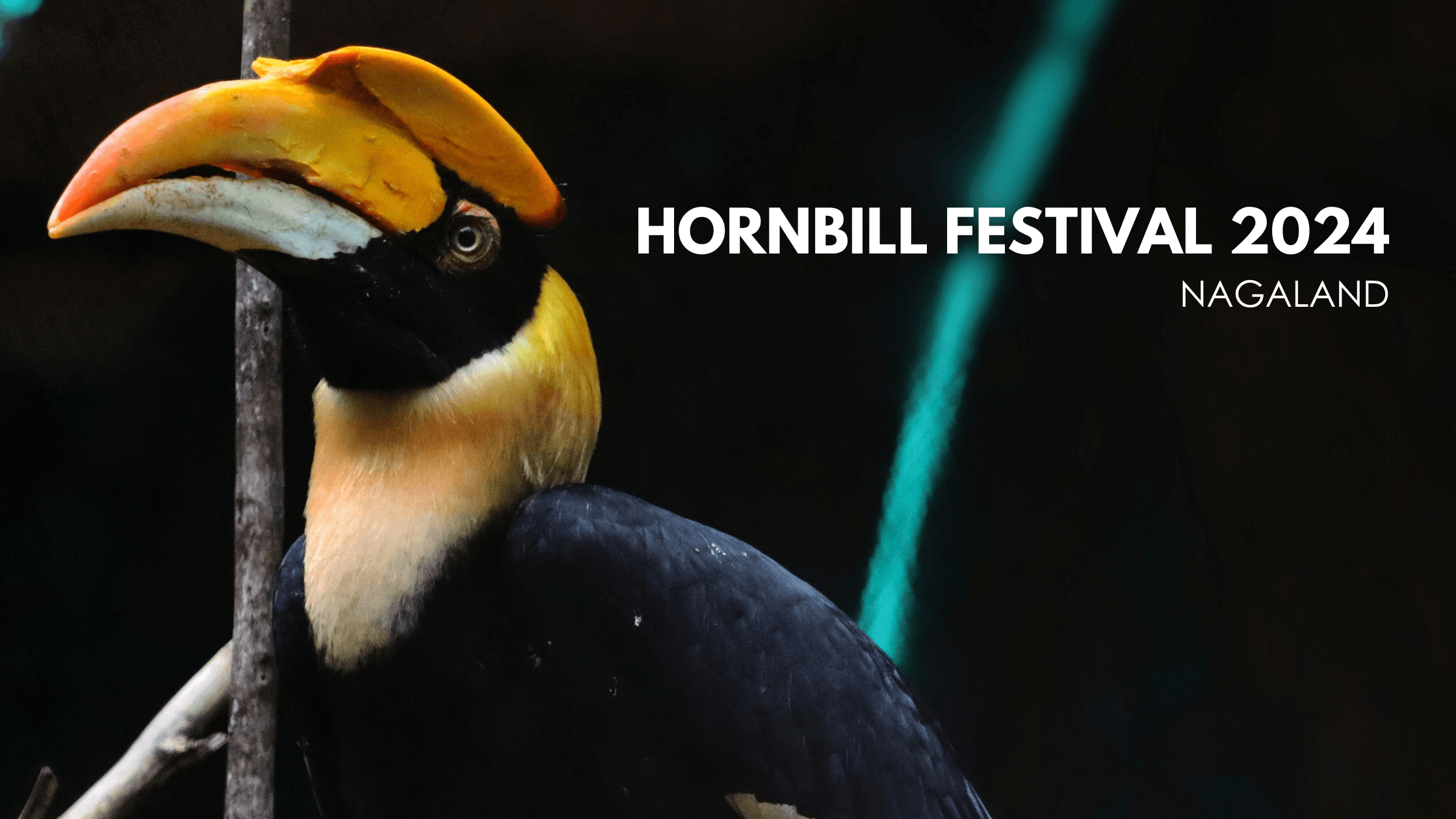
Table of Contents
Key Takeaways
- The Hornbill Festival has been celebrated annually since 2000, representing 17 Naga tribes.
- It takes place at Kisama Heritage Village, about 12 km from Kohima.
- Festival tickets range from INR 40-60, with an additional camera fee of INR 50.
- Dimapur is the closest airport, offering convenient access to the festival.
- Accommodation options vary from hotels to local homestays and camping experiences.
- Expect vibrant performances showcasing music, dance, and traditional sports.
Introduction to the Hornbill Festival
One of the largest events in Nagaland is the Hornbill Festival, it takes place from 1 to 10 December. The event is organized by the State Tourism and Art & Culture Departments. Located at the Naga Heritage Village in Kisama, near Kohima. The festival was started on December 2000 and it commemorates the cultural heritage of Naga tribes.
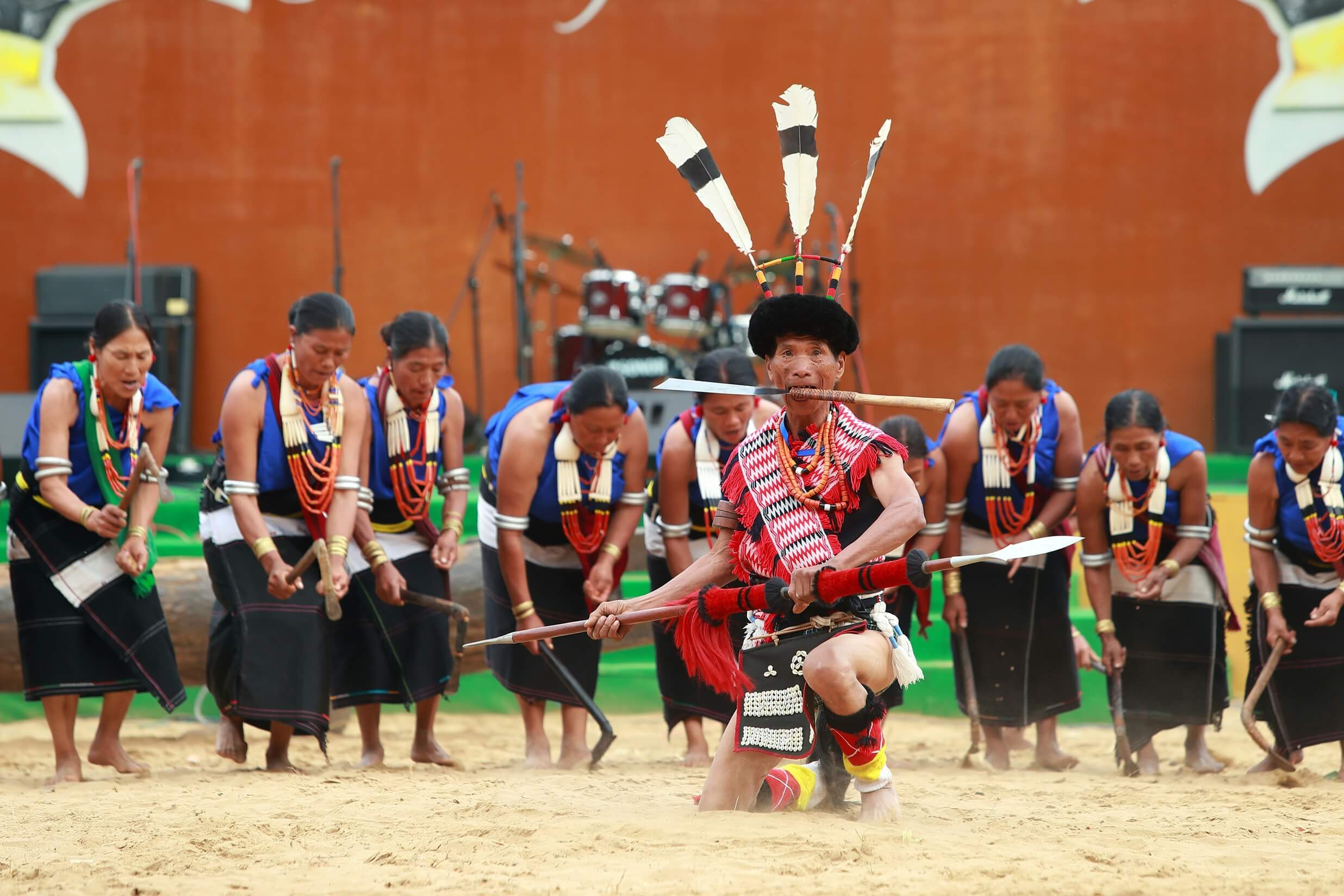
This festival ensures the vibrancy in the unique culture of Nagaland. It unites various Naga tribes through music, dance and crafts. On the other hand, they can watch mesmerizing shows, taste local dishes and witness traditional sports such as wrestling and archery.
Around 65% of the people from Nagaland, who are mostly based on agriculture, utilize this festival to exhibit their culture. There are plenty of events, craft shows and traditional games to keep the festival alive. It brings Naga traditions, art and cuisines into light It has become a tourist attraction for many who visit every year making tourism which shows the rich culture of people of Nagaland.
History of the Hornbill Festival
It has a rich cultural value which is you will see through the history of Hornbill Festival. This was introduced by the Government of Nagaland in the year 2000. There to share and save the diverse traditions of a state.
Initially a cultural event but now becoming grand celebration Today, it is visited by individuals from around the globe.
Kisama Heritage Village — The Festival dates are from 1st December to 10th December. It’s close to Kohima, the capital of Nagaland. Its famous as the ‘Festival of All Festivals’ which is celebrated with full vigor and gaiety and expresses the most awaited aspects of every tribe residing in Nagaland.
Hornbill is the festival named after an endangered bird. Belonging to the Nagas, this bird is of great importance in their culture since centuries.
There are a number of traditions associated with the festival. Naga musics, Naga dances and arts & crafts you get to see. In addition to the traditional games, there is lots of Naga food, including Akhuni (bush/mecha kachu), so they say. and sports such as- Naga wrestling/ archery etc.
The entry ticket to the festival costs less then 100INR only. This allows you to plunge deep into the rich customs of Nagaland.
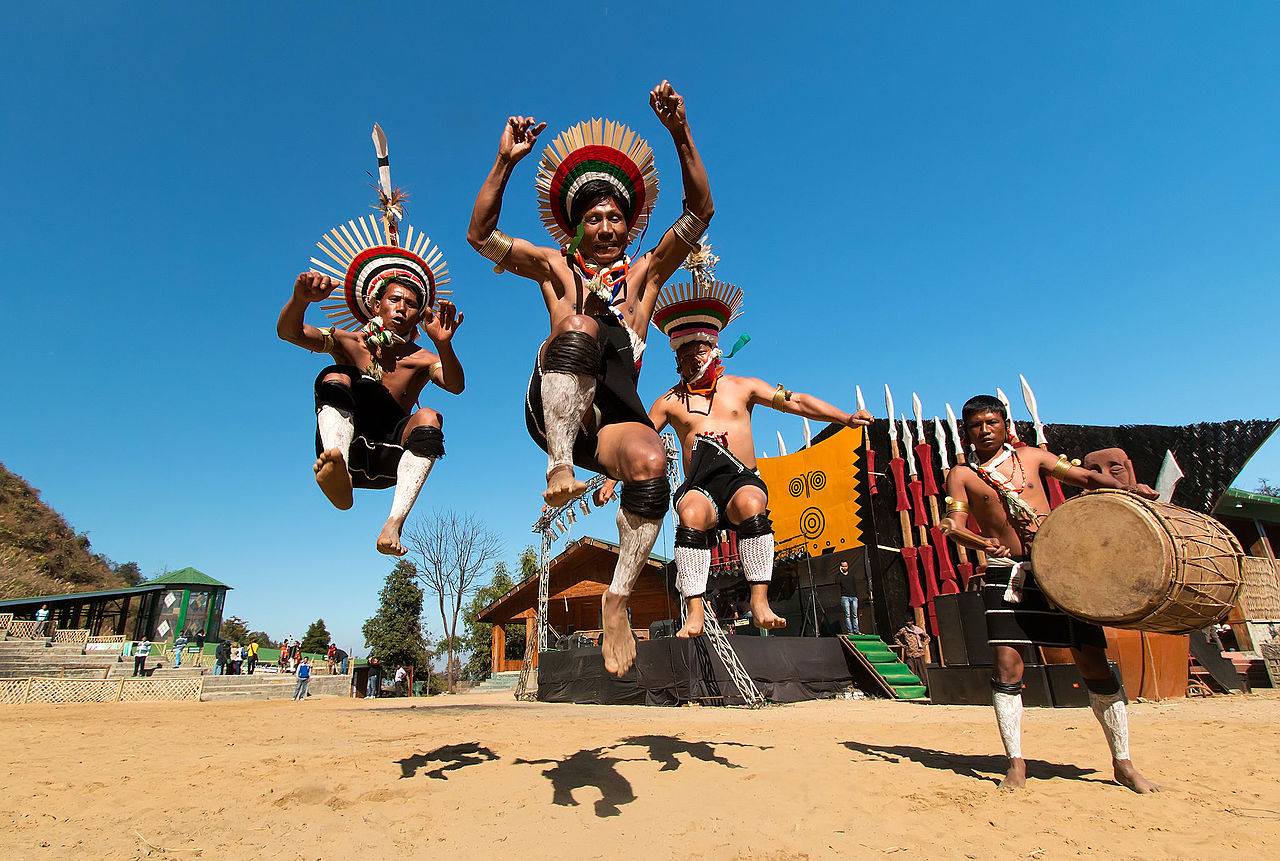
Location and Venue: Kisama Heritage Village
Named as Kisama Heritage Village, it is set at a distance of about 12 km from Kohima, the capital city of Nagaland and serves as the main venue for Hornbill Festival. Since 2003, it has been an integral part of Nagaland tourism attracting thousands each year. Located near Kigwema and Phesama villages from which the land was given for this cultural treasure, the place derived its name.
There are 17 beautifully constructed houses at Kisama Heritage Village with each reflecting the distinctive fashion of different Naga tribe. This village homes give deep insight into the Naga way of living. They all celebrate the Hornbill Festival between 1-10 December, which features cultural displays, food bazaars and traditional games. The festival is a tribute to the cultural, traditional and historical heritage of Nagaland.
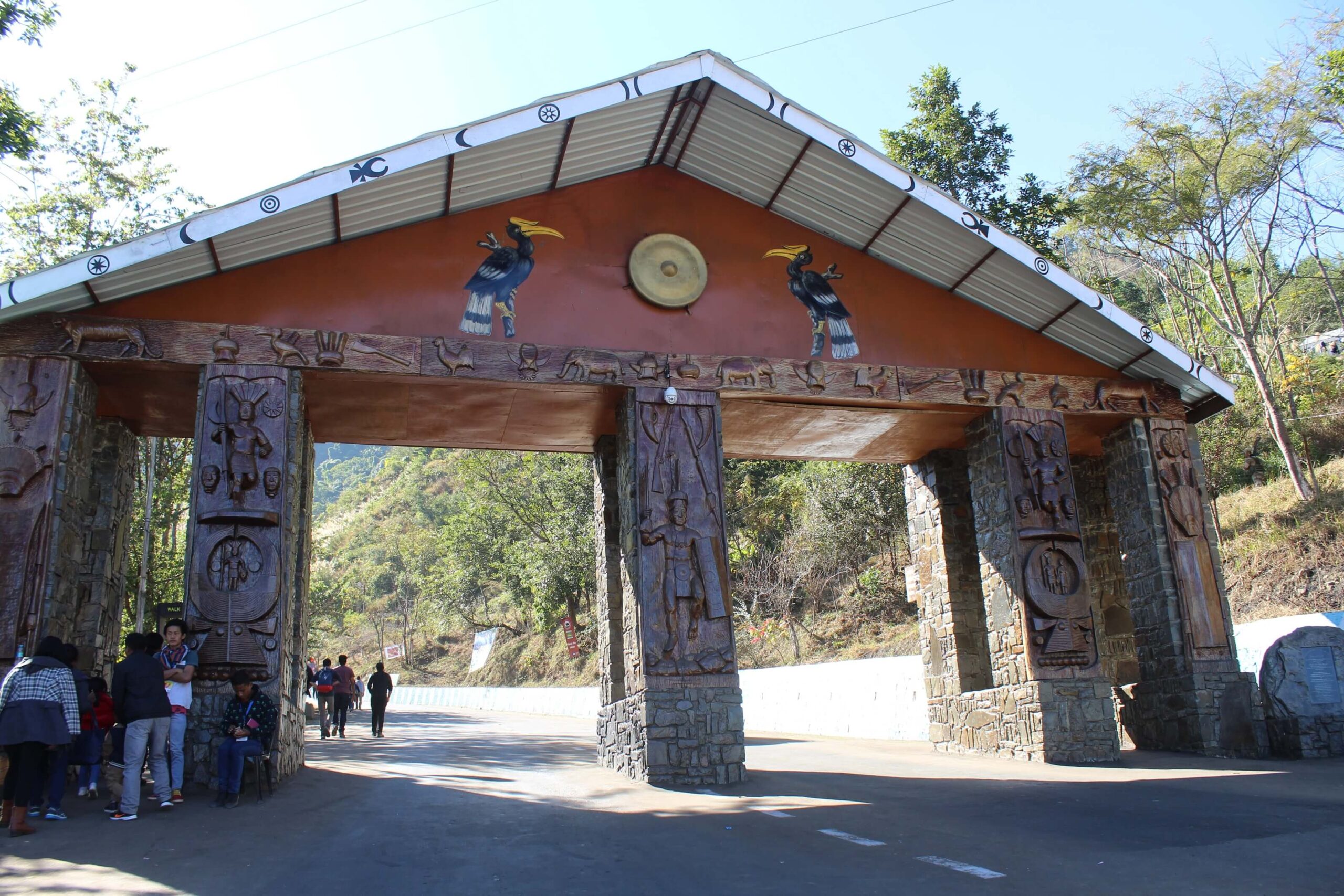
Kisama, the place walks in beauty and much more. We call it a Window to Nagaland where the Locals express their traditions and Tourists know theirs. This initiative adds to the preservation of Naga heritage via Nagaland tourism. One of the major tourism event that has garnered tourists to Nagaland is The Hornbill Festival, showcasing the various ethnic tribes of the State.
| Aspect | Details |
|---|---|
| Distance from Kohima | Approximately 12 km |
| Established | 2003 |
| Number of Houses | 17 |
| Tribe Representation | Various Naga tribes |
| Annual Festival Dates | December 1 to December 10 |
| Initiators | Nagaland Tourism, Tourism Nagaland, Naga Heritage Village, Kisama |
| Nearest Airport | Dimapur (70 km away) |
| Closest Railway Station | Dimapur (74 km away) |
What to Expect at the Hornbill Festival Nagaland
Hornbill Festival promises to offer a vibrant cultural celebration for its Visitors. This is an opportunity to witness the rich traditional customs of Nagaland. There are of lot of activities that will take place from December 1 to December 7 in this festival.
The festival is showcasing the traditional dances from 17 tribes of the area are performed by cultural troupes. These dances throw some light on the deep culture and distinctive traditions of Naga people. So, the festivities begin at 9:30 AM each day… plenty of time to get your festive on!
From music festivals, to art shows, food fairs — there are many cultural experiences that can be explored. The festival’s main highlight is the Hornbill International Rock Festival, where local and international rock bands get together to perform. You can also try out indigenous games like traditional archery and Naga wrestling.
Nagas exhibits locals handicrafts and handlooms which you can purchase these unique souvenirs. Guests can expect live music to accompany their dinner throughout the week. The festival, which is becoming larger every year and draws tourists to Nagaland from all corners of the world, promises visitors another surprise and an experience that will leave them with unforgettable memories.

Travel Requirements: Inner Line Permit
An essential document issued by the Indian government to allow inward travel of an Indian citizen into a protected or restricted area for a limited period is called Inner Line Permit (ILP). To be able to travel in Nagaland, you still need ILP. This permit is essential for both Domestic and International tourists to wander around in the Heritage rich culture and scenic beauty of Nagaland.
Tourists can get the ILP application form from Nagaland House offices at various cities like New Delhi, Kolkata, Shillong and Guwahati. All travelers must have their own ILP in order to comply with state law. The permit is only valid for 30 days, and you will have to pay a sum of Rs 50 for a 15-day permit or Rs 100 for the whole month. There are different fees for traders, labourers and students, with extensions available if required.
The ILP online can also be obtained through the official government portal: https://ilp.nagaland.gov.in/ Once you apply, you will receive an Application ID which can be used as a proof to obtain your permits much ahead if you are a traveller.
They apply offline by going to the Nagaland House Office. All foreign tourists must report to a local police station upon arrival. To finish your application you will need passport sized photos and ID copies. For students with no local contact, a guarantor should be listed.
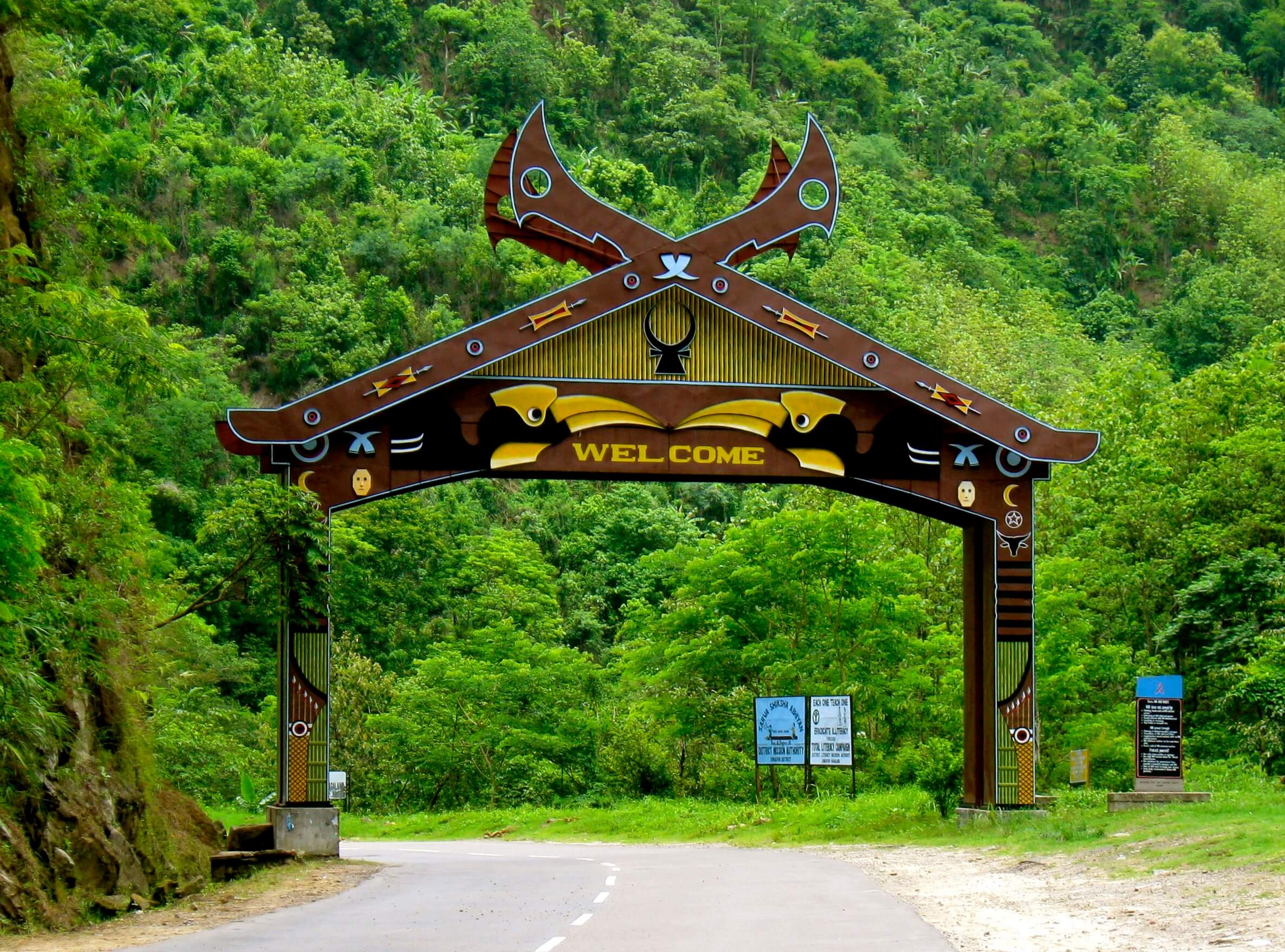
Inner Line Permit is a must to avoid any legal complications on your journey to Nagaland. So that you can experience those wonderful beauty and vibrant culture that we mentioned earlier by meeting the official recommended guidelines post Indian government. By getting your your ILP, you will manage to take back home a joyful, delightful experience of Nagaland.
| Permit Type | Validity | Fee (INR) |
|---|---|---|
| Tourist (15 days) | 15 Days | 50 |
| Tourist (30 days) | 30 Days | 100 |
| Trader (3 months) | 3 Months | 100 |
| Trader (1 year) | 1 Year | 500 |
| Laborer (3 months) | 3 Months | 100 |
| Teachers/Priests (1 year) | 1 Year | 500 |
| Student (3 months) | 3 Months | 100 |
How to Reach Nagaland
How to Reach Nagaland – by Air, Road and Rail You can opt for air transport or road ways, according to your comfort and the place you are coming down from. Here we tell you your choices to make it easier for you when planning a visit.
Nearest Airport to Kisama
The nearest airport to Kisama is Dimapur Airport, which has convenient connecting flights from major Indian cities. However, if you are travelling from really far off places in the country too, Guwahati Airport in Assam is another great option. Then you can take a taxi or public transport to Nagaland.
By Road: How to Reach and Travel Time
The best way to explore the sites is on the road. Guwahati-Kohima is approximately 350 km and takes 8 hours. Shared taxis or buses from Dimapur are available till Kohima which takes around 2.5 hours to reach(Hornbill Festival)
Kisama Heritage Village is only 12 km away from Kohima and could be reached in about 30 min. You can then explore the city and enjoy the culture and festivals.
You can even try different adventure by train between Guwahati and Dimapur. Post that, you have the option to continue with your Road Trip in Nagaland. That way you get to enjoy beautiful sights as you drive.
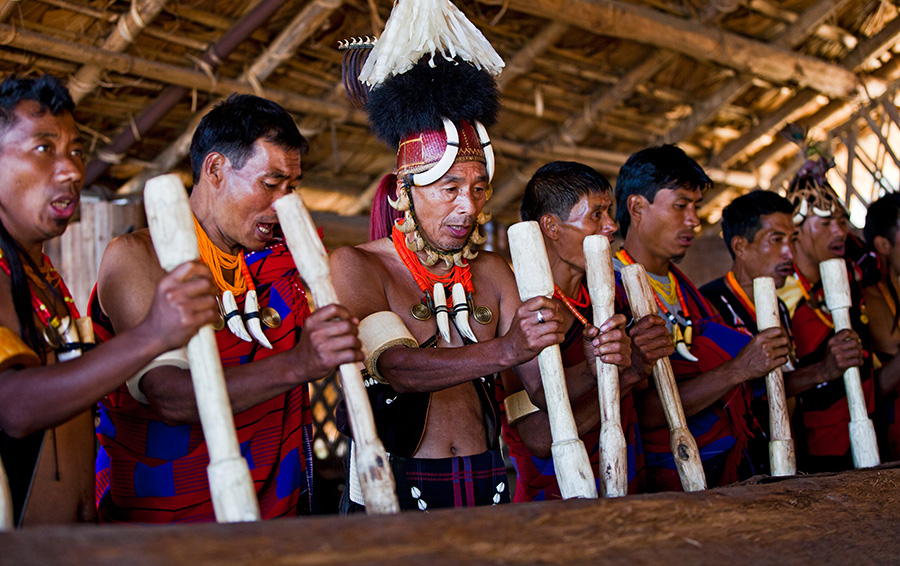
Hornbill Festival Accommodation Options
If you do not want to spoil your Hornbill festival experience look for the best place to stay during this fest. They can choose from an array of options that cater to their comfort, convenience and taste allowing them to have a culturally rich and fulfilling experience.
Hotels in Kohima
The luxury hotels in Kohima are Hotel Japfu and De Oriental Grand. All of the apartments have all modern amenities and they are easily accessible to local attractions. Another option in the list of best places to stay in Nagaland is Hotel Vivor, another comfortable hotel.
Local Homestays for Immersion
Homestays for a local experience of Nagaland. Daydream Nest, Sunrise View Cottage Family, and Vicha Paying Guest House allow travelers to stay with Naga families and be a part of everyday life. The home stays are curated to suit the dietary sufferings as well, so your stay is easy.
Hostels and Budget Stays
Dovipie Inn, Hotel Ariel and Vicha Guest House are good for those with a tight budget. They have budget accommodations with a vibrant social atmosphere.
Camping Experiences in Nagaland
Dare to Camp in Kohima! Camp Yedikha, Camp Hornbill and Runo Campsite are other options where you can share tents, attend bonfires or just go meet the locals. Located near the Festival Stage, Camp Hornbill gives best in class Tents for Single, Twin and Triple places at very nominal costs appropriate to the adoration pioneer.
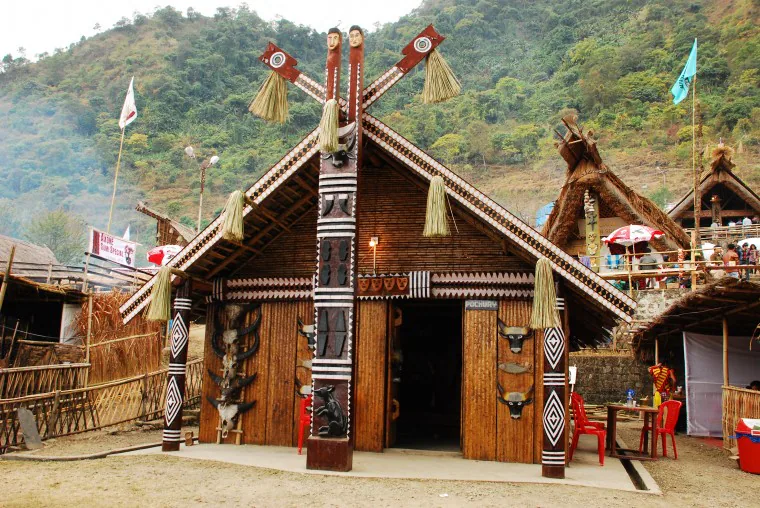
| Accommodation Type | Details | Price Range (INR) |
|---|---|---|
| Hotels in Kohima | Hotel Japfu, De Oriental Grand | 2,500 – 5,000 |
| Local Homestays | Daydream Nest, Yaotsu B&B | 1,000 – 2,500 |
| Hostels | Zuba Kohima Hostel, Vicha Guest House | 500 – 1,200 |
| Camping Sites | Camp Hornbill, Camp Easy | 1,000 – 2,000 |
Hornbill Festival Activities and Events
Hornbill Festival is celebrated in the state from December 1 to 10. Well, a huge celebration of Nagaland’s culture. The Naga Heritage Village, near Kohima where people from all over the world visit. They participate in various Hornbill Festival events showcasing their traditional dances and music.
There are food stalls for visitors to try local foods. Crafts made of wood carvings and textiles are also observed by them which they can purchase. Archery, Wrestling and Tug of War depict the Naga spirit through these sports
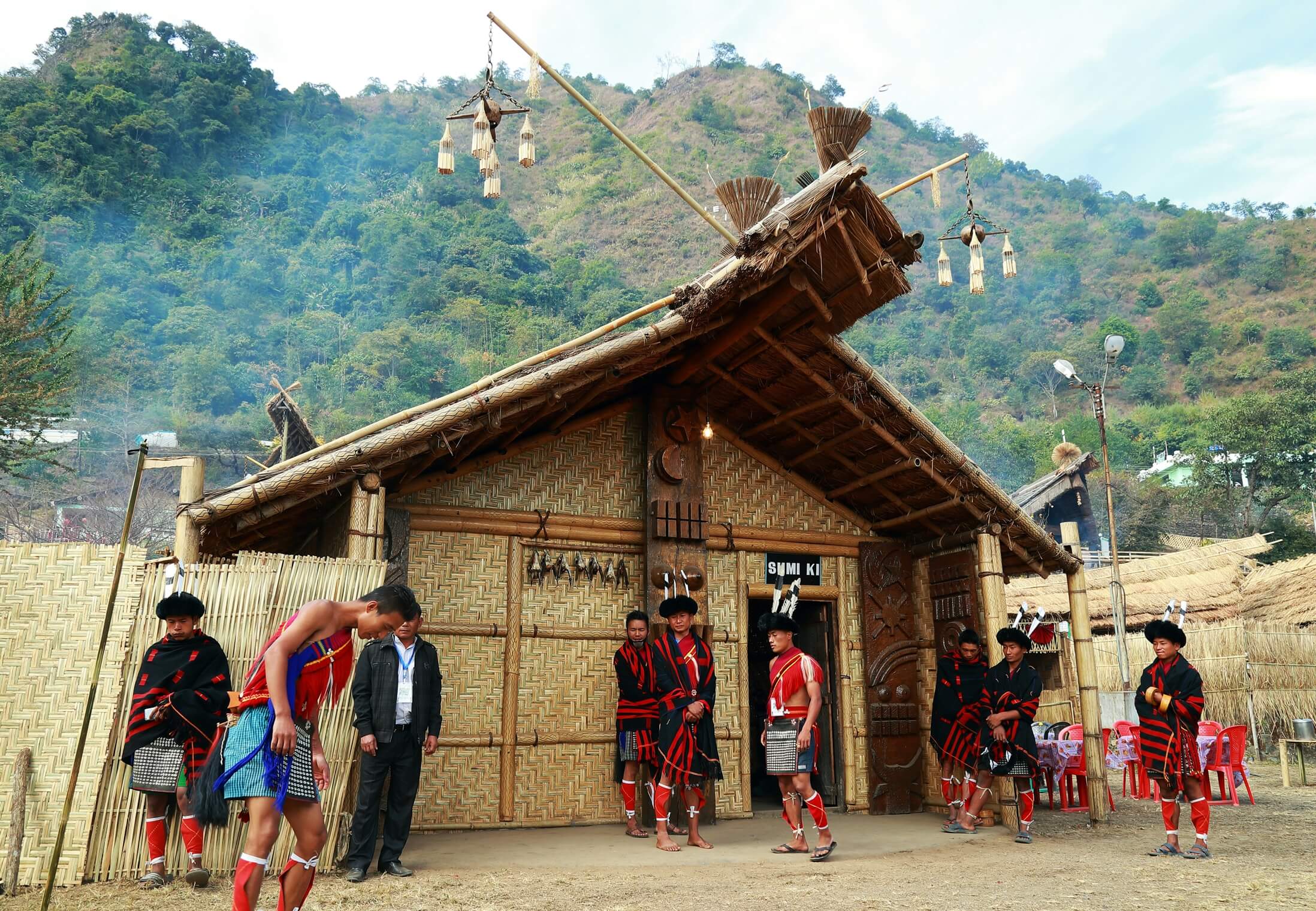
The jewel in the crown of this festival, though, would have to be the “Miss Nagaland” contest. It celebrates the richness and diversity of Nagaland. Followed by the workshops on Naga traditions.
The Hornbill Festival gathers people from all over the globe. It helps everyone explore and appreciate the different cultures of the Naga people.
| Event Category | Activities |
|---|---|
| Performances | Traditional dances and music concerts |
| Competitions | Archery, wrestling, tug of war |
| Beauty Pageant | Crowning of Miss Nagaland |
| Workshops | Traditional arts and crafts |
| Food | Local cuisine showcased at food stalls |
| Cultural Exchange | Intercultural engagement and understanding |
Cultural Significance of the Hornbill Festival
much essential festival that showcases the Cultural heritage of Hornbill Festival. Intends to assimilate the various tribes of Nagaland. The festival promotes the spirit of Naga culture, designed to revive and protect the rich and unique traditional practices with folklore.
In order to foster unity among the tribes, the Hornbill Festival began in 2000. The festival fields folk dances, music, and arts and crafts. Each of the sixteen tribes in Nagaland has its own unique moang representing their culture.
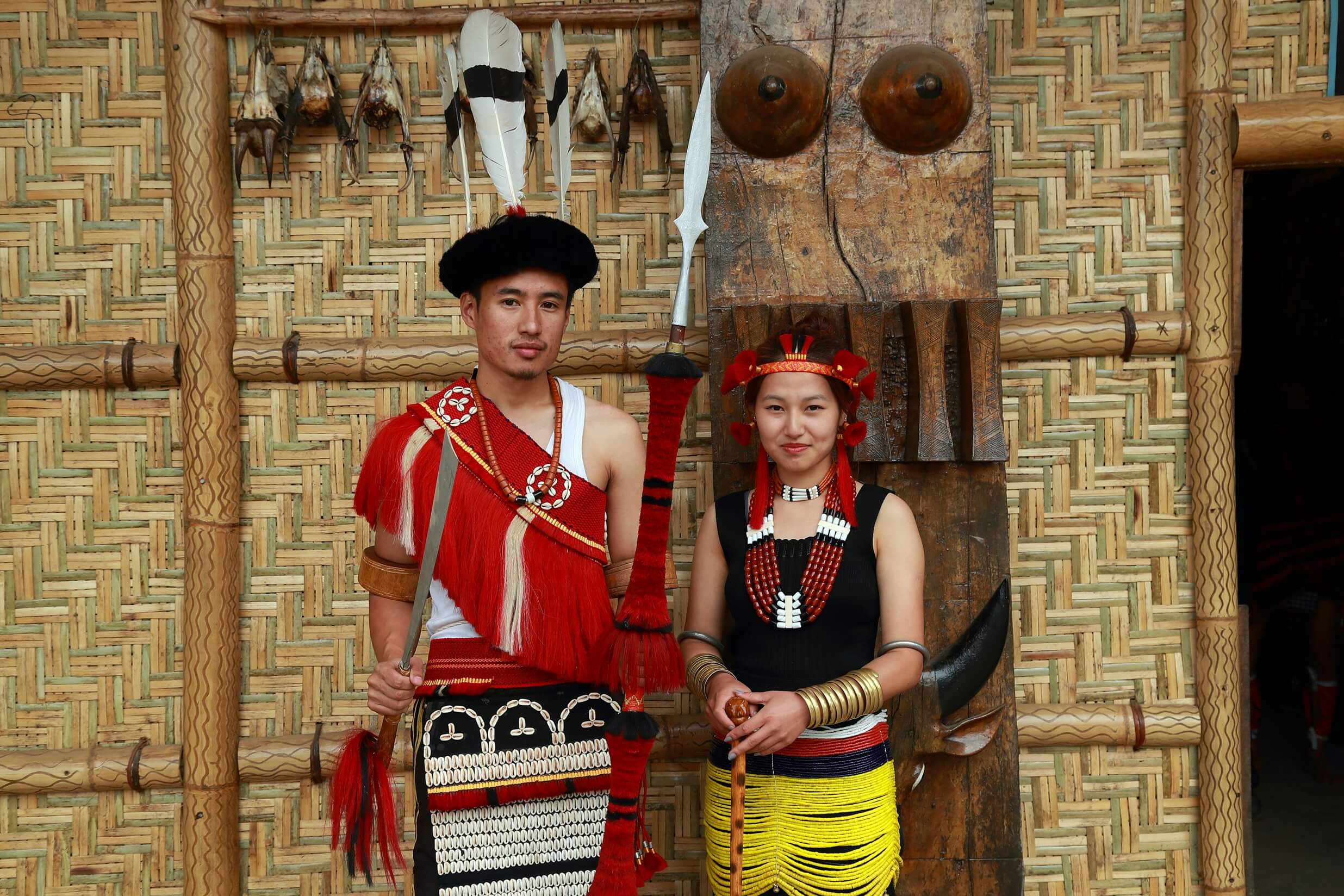
It’s a celebration of the past and coming together with today. Visitors have the option to learn about Naga cooking, and can taste traditional dishes such as smoked pork. This demonstrates the deep food culture of the Naga people.
This year, over 200,000 are anticipated to come. The festivities will include International Music which would make it even more mesmerizing. Nagaland’s lifeline Hornbill Festival which is as much a piece cultural heritage by spurring tourism promotes its economy too.
Hornbill Festival helps in preserving Naga culture It gives a sense of pride to the tribes and is an event that they look forward to all year long.
Traditional Performances and Displays
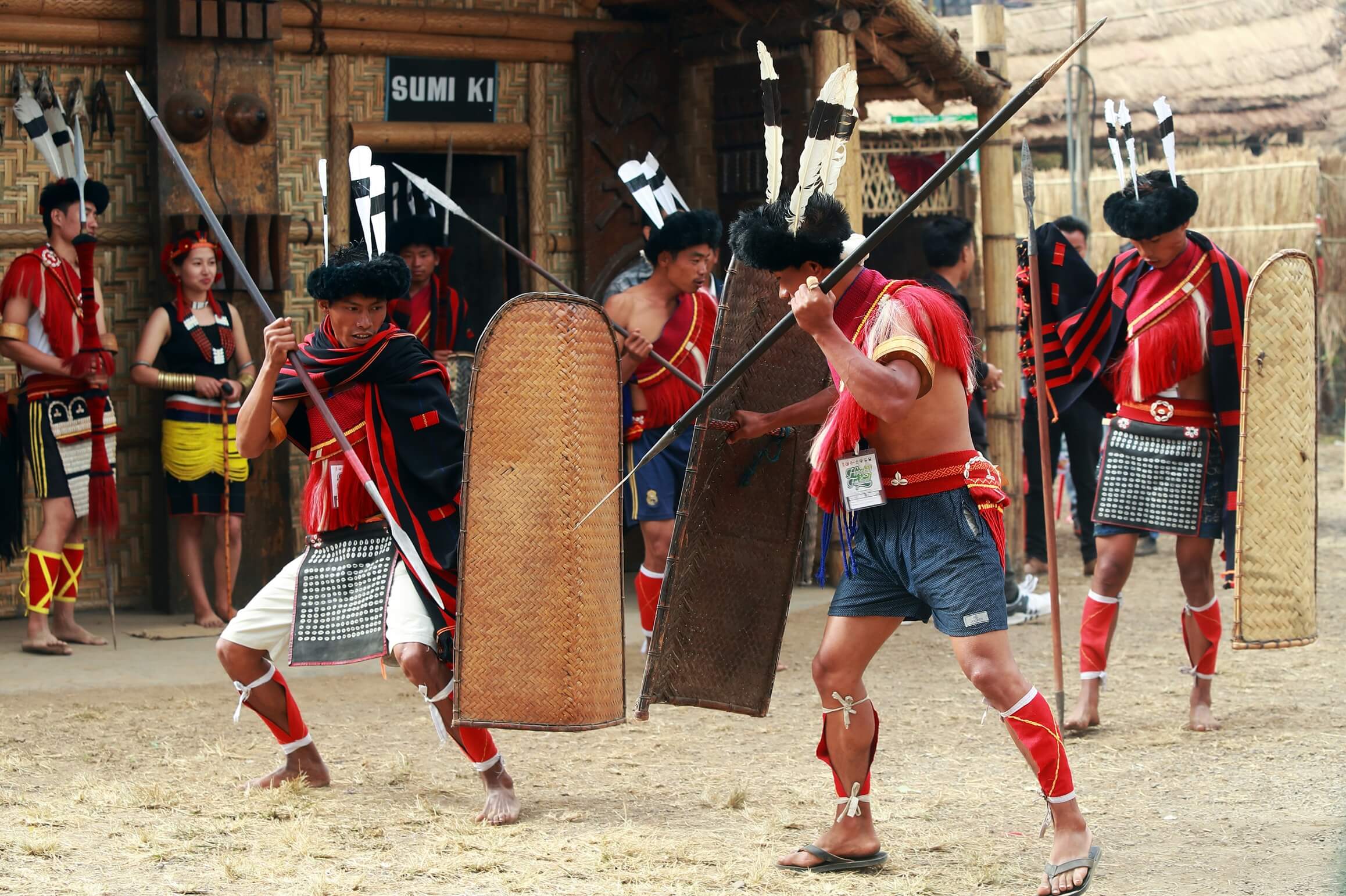
The Hornbill festival takes place every year and the festival is a showcase to bring together all Naga traditional performances in one platform. These speak of distinct cultures of the tribes in Nagaland. More than 100,000 people come to watch dances and songs and rituals and history of Naga garnered through the ages.
It is marked by performance from various tribes of the region like Angamis, Konyaks and Lothas. Songs are generally short & traditional dances typically used to tell stories rich in cultural significance. 18 cultural tribes perform daily at Kisama Heritage Village, showcasing so many dance forms for the audience to experience.
Its not just about dancing and music. Weaving as well as ancient games that depict the tribes history can be witnessed by visitors. Craft demonstrations such as the making of bead jewelry, shawls and other bamboo items. Black pottery – showcasing the art in Naga traditions
Cultural activities, like the traditional wrestling and archery lends a cultural air to this festival. These activities promote solidarity and showcase the hobbies of the tribes. There are food stalls for visitors to taste the local dishes thereby showing that food is a huge part of Naga culture.
Hornbill festival is important event for the celebrating of Naga tradition. To explore how diverse the region is and its identity you could say. And visitors too, with a renewed appreciation for the culture of the Nagas.
Tribe Representation at the Festival
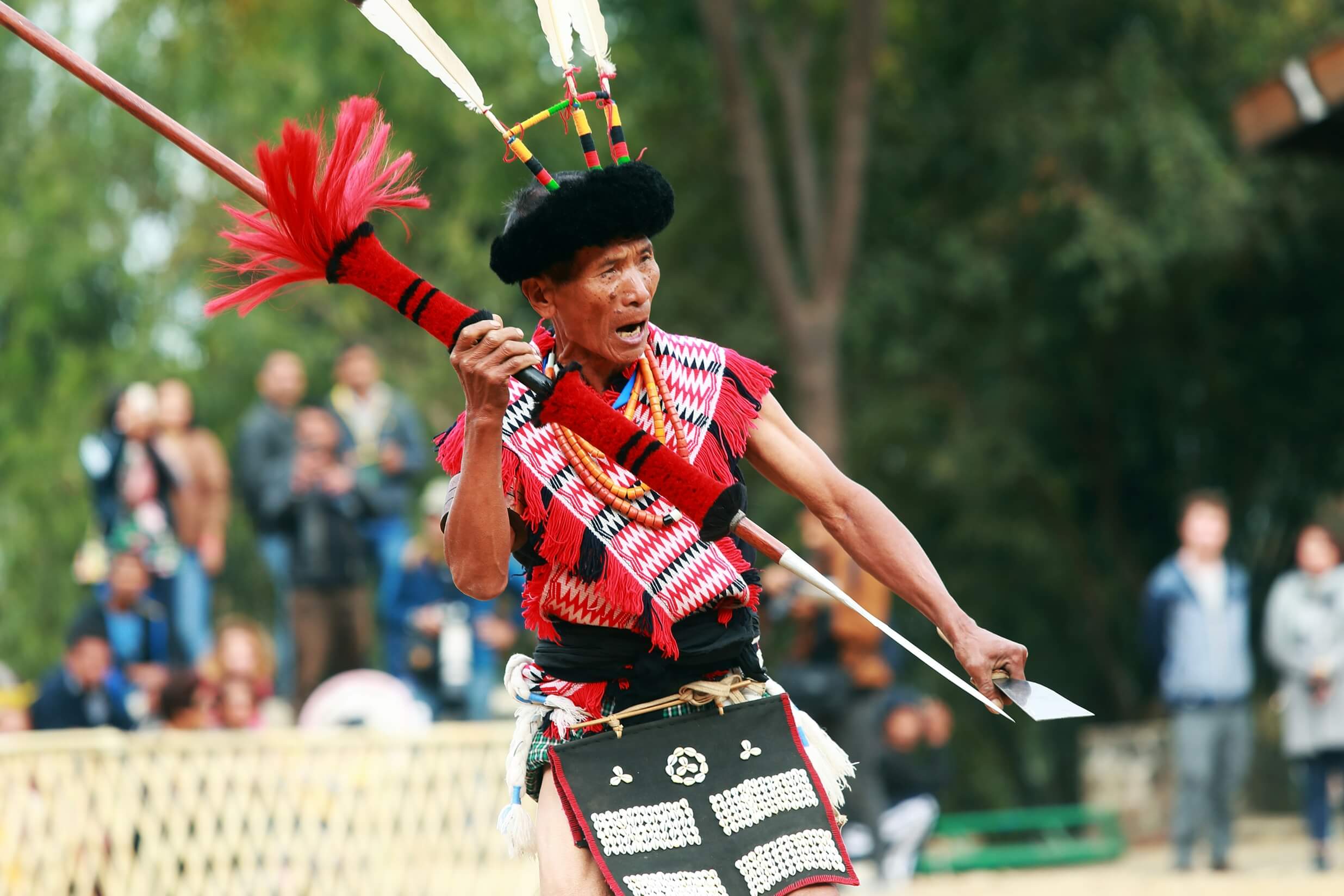
This Hornbill Festival of Nagaland that witnesses the participation of 17 different warrior indigenous tribes is a vibrant event. Every tribe gets to exhibit their music, dance, art, cuisine and traditional sports.
By bringing these different tribes together, it helps build a cordial rapport and harmony among themselves. Hornbill Festival is the celebration of Naga way of life. From here, you’ll witness traditional dances and the elaborate dresses that present a rich Naga culture. Visitors can get to know the residents and their customs
- Cultural Performances (from different tribes): Dances, songs, foods per tribe.
- Tribal Representation: The Konyak tribe from Yannyu village will be marking their first appearance in the Festival, signalling the importance of inclusion.
- Community participation: Elders within many different tribes talk about the preservation of traditions for future generations.
The Hornbill Festival is more than a festival. It is a way to secure disappearing traditional knowledges and practices. It is a cultural expression crossing the rifts with people like Ngauku from the Chang community. This becomes a means through which people can witness and learn about the rich heritage of each tribe, thus gaining respect and admiration for all the Naga tribes while at the festival.
Cuisine and Food Experience at Hornbill Festival
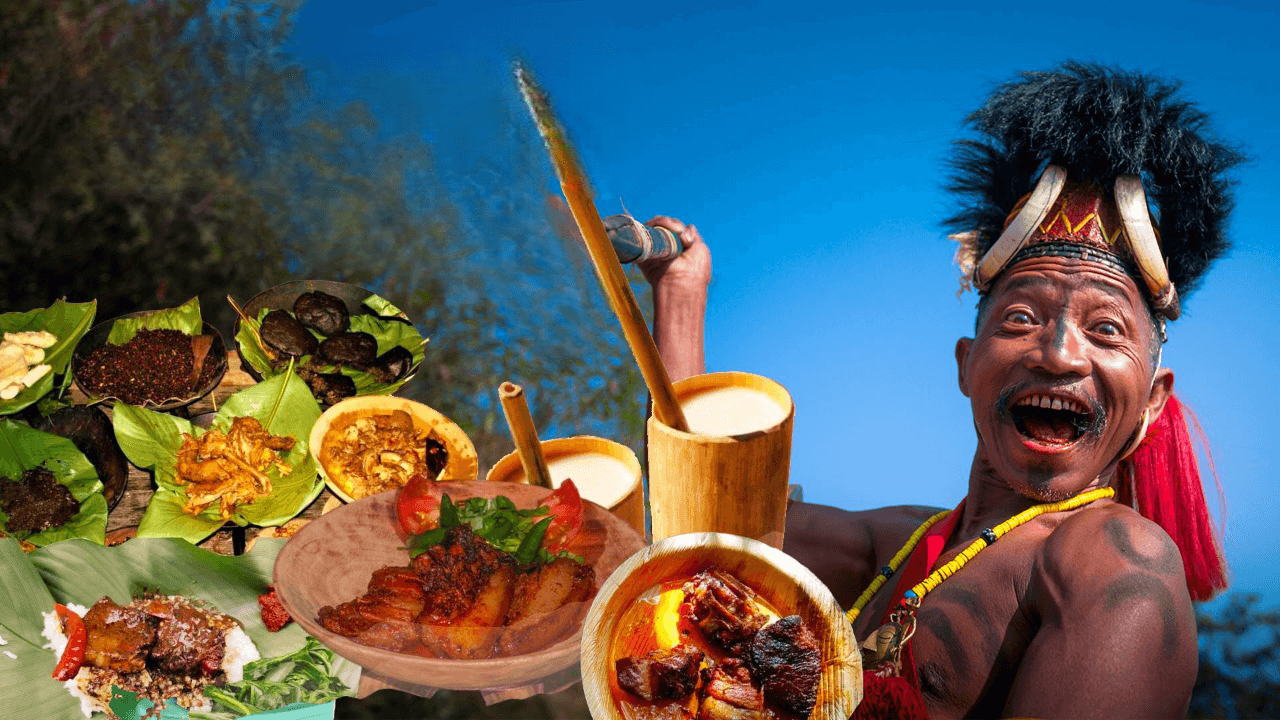
Of course, for food lovers the the Hornbill festival is a terrific place to visit! It allows visitors a peep into the flavours and aids courtesy Naga cuisine. The menu includes smoked pork, bamboo shoot pickles and the world famous Naga chili amongst other traditional dishes.
The smell of smoked pork, and fresh veggies have been wafting in the air from traditional kitchens found at the festival. Even street food stalls are found selling momos at some places which make it even more interesting.
The cooks from the Angami tribe open up their kitchen secrets at the festival. Famous cook Zachi discusses making traditional dishes with local ingredients. There is also music and folk dance to make it a complete cultural getaway.
Well, the Hornbill Festival is not only the good food. It showcases the oneness and heritage of 17 tribes Nagaland. Rice beer is a local refreshing drink that accompanies the cool food, it´s worth trying. High on food and a little booze, we stumbled back to our car digesting the flavours of Naga culture.
| Traditional Dishes | Key Ingredients | Serving Style |
|---|---|---|
| Smoked Pork | Pork, local spices | Served with rice |
| Bamboo Shoot Pickles | Bamboo shoots, mustard oil | Side dish |
| Naga Chili | Chili peppers | Used in many dishes |
| Momos | Flour, vegetables, meat | Street food |
| Rice Beer | Rice, local herbs | Beverage |
Shopping for Souvenirs and Artisans’ Products

You can also shop the beautiful naga handicrafts in The Hornbill Festival. Flexibility: Buy One-Of-A-Kind Hornbill Festival Souvenirs Made By Local Artists More than 100,000 visitors in December is good evidence that there are plenty of souvenirs and local handicrafts which reflect the culture of this area. The stalls offer wood carvings, Naga shawls, traditional jewelry and art.
Nagaland Markets to Look Into for traditional souvenirs are:
- The RCEMPA Complex in Kohima has real Naga jewelry.
- The Khermahal Market in Dimapur sells genuine Naga shawls.
- The Bamboo Market in Dimapur is full of bamboo and cane items.
- The Tribal Art and Crafts Center in Kohima is packed with indigenous crafts.
- Local music stores let you buy traditional Naga musical instruments.
| Item | Market/Store | Location |
|---|---|---|
| Naga Shawls | Hong Kong Market | Dimapur |
| Bamboo Products | Bamboo Market | Dimapur |
| Naga Pottery | Longpi Village | Nagaland |
| Tribal Masks | Naga Heritage Village | Kisama |
| Beadwork | Naga Art and Handicrafts | Dimapur |
Talking to artisans lets you learn about their work and support them. Going to the festival means you’ll get to take home special souvenirs Hornbill Festival. These items show the talent of the local people.
Weather and What to Wear for the Festival

In December, Nagaland is in winter, with temperatures between 7°C and 24°C. Daytime is usually 10°C to 20°C, and nights can get down to 4°C to 7°C. The Nagaland weather December is mostly dry, making it great for exploring without rain.
If you’re going to the Hornbill Festival, here’s what you should pack:
- Thermal wear for warmth
- Sweaters and jackets to layer up
- Waterproof outer shell for unexpected moisture
- Scarves to protect against chilly winds
- Insulated boots for comfort during outdoor activities
Wearing traditional Naga clothes adds a special touch to the festival. Men often wear “shongphong” and “joho.” Women wear vibrant woven shawls and skirts.
For eco-friendly choices, check out Kosha. They make sustainable winter clothes from merino wool and recycled materials. This supports the festival’s values and helps the planet.
Having the right clothes means you’ll be comfy while doing lots of things at the festival. You can hike, see cultural shows, and take photos. Get ready for a festival that celebrates diversity and Naga culture.
| Item | Description |
|---|---|
| Thermal Wear | Keeps you warm in cool temperatures. |
| Sweaters and Jackets | Layering options for flexibility in temperature control. |
| Waterproof Outer Shell | Essential for sudden rain or dew. |
| Scarves | Protects your neck from cold winds. |
| Insulated Boots | Perfect for trekking and keeping feet warm. |
Travel Tips for a Memorable Experience

Planning a trip to the Hornbill Festival needs careful thought. It happens from December 1st to December 10th, filled with activities and cultural experiences. Booking places to stay and shared taxis early is a good idea. For example, a shared taxi from Dimapur railway station to Kohima costs Rs 400 and takes three hours. Then, getting to Kisama village from Kohima costs Rs 50 and takes 30 minutes.
Learn about local customs to make your visit better. Interacting with locals makes your experience richer and builds respect. Remember to drink plenty of water, especially when trying traditional foods like rice beer, smoked pork, and crafts. There are many stalls with jewelry, traditional utensils, and more, showing off local skills.
- Respect the traditions of local communities.
- Plan visits around cultural events such as rock concerts and cooking competitions.
- Consider visiting the Kohima museum for insights into local history.
- Get ready for an array of experiences, from scenic nature walks to wildlife explorations.
Traveling around Nagaland during the festival can be tough due to more cars on the road. The trip from Kohima to Kisama might take an hour. Be ready for a special experience that shows off Nagaland’s spirit, keeping your travel tips Nagaland in mind.
Conclusion
The biggest festival of Nagaland, known as The Hornbill Festival. It spans 10 days and unites 17 major Naga tribes. They celebrate their traditions through different acts.
It is an opportunity for visitors to soak the culture of Nagaland. Local artists will get opportunities to play their music, trade stalls with interactive booths explaining the traditions of Naga tribes. The festival is organized every year to sustain the culture of Nagaland and take it to the next generation.
Getting ready for the Hornbill Festival means you’re in for a week of fun and learning. It’s not just an event; it’s a celebration of Nagaland’s strength, unity, and traditions. Make sure you don’t miss out on this unique experience.
FAQ
What is Hornbill Festival?
Hornbill Festival – India, Nagaland. This annual event in Nagaland, is a must see. It depicts the culture of 17 Naga Tribes. It is a 10-day festival over the period of December 1 to December 10, collection music, dance, crafts and local cuisine.
How to get an Inner Line Permit for Nagaland?
You will need an Inner Line permit while visiting Nagaland. Benefit: Online / Offline Official Weblink :https://ilp.nagaland.gov.in/ For domestic travelers and Foreigners.
What are the travel options to reach the Hornbill Festival?
Dimapur Airport is the nearest one to Kisama, you can fly from Kolkata or Delhi. Guwahati is around 500kms away. Well, you can catch taxis or buses for it.
Hornbill Festival is celebrated in which state?
The fest is conducted at Kisama Heritage Village, located 12 km from Kohima. It is a cultural centre with villages and tribal displays.
Accommodations To Look For During Hornbill Festival?
Hotels, homestays, hostels or camping. For those wanting a real local feel, Hotel Japfu and Vicha Paying Guest are popular choices.
What to expect : Activities at Hornbill Festival
You will find traditional dances, music, craft shows alongside food stalls and sports competitions. A celebration of heritage skills and culture.
What needs to be put in my travel bag while going for Hornbill Festival?
Wear warm clothes, comfortable shoes and go trekking. Winter makes its presence felt in Nagaland.
Can I shop for local handicrafts at the Hornbill Festival?
Sure, a little booth where you could purchase unique crafts. There are also Naga shawls, wood carvings and traditional jewelry made by local artists.
What cultural importance do they embody through the Hornbill Festival?
The festival is dedicated to unity and preserving Naga culture. Their way of life, through their folklore, traditional art and crafts. It would unite the tribes and identify them.
Local dishes I must try out at a festival?
Treat yourself with the conventional Naga treats such as rounding off on rice, fish and pork, street food like momos. The local party is not complete without an indigenous liquor, rice beer.
Do we have to pay any fee for entry in Hornbill Festival?
Yes, there is a token entry fee for all the visitors, be it domestic or international. The fee will cover the cost of the festival and cultural displays.
What do I need to participate in the Hornbill Festival?
Some activities where visitors can participate, e.g. local games or grin room session/ cooking class. Only the Naga tribes are still promised to traditional performances.
What is the Ideal Time to Visit Hornbill Festival?
The celebration begins on December 1 and is over by December 10, the first and last day of which are the busiest. If you can go early in the day, the better.
Is the Hornbill Festival family-friendly?
Indeed, the Hornbill Festival is very family-friendly with many activities suitable for children such as cultural performances, food stalls and arts & crafts.
Are there guided tours available during the Hornbill Festival?
Actually guided tours can be scheduled which include cultural performances, exhibits and history of the local people. Travel agencies usually book these tours, or you can purchase them on spot.
Is photography allowed at the Hornbill Festival?
It is open to the public, and yes photography is allowed. Nevertheless, do respect local people and ask their permission before photographing them, particularly during religious ceremonies.
Is there wi-fi or mobile network at the Hornbill Festival?
There are mobile networks but the signal strength can be poor. Some venues may offer Wi-Fi.

It is a chance to know about Naga culture and rites. So I am eager to be there from 1st December. I need to collect Ilp first.